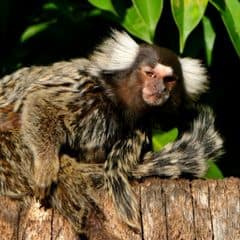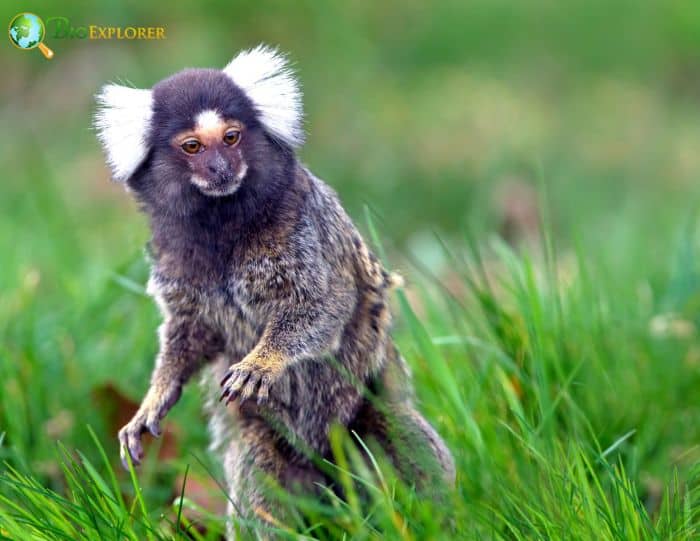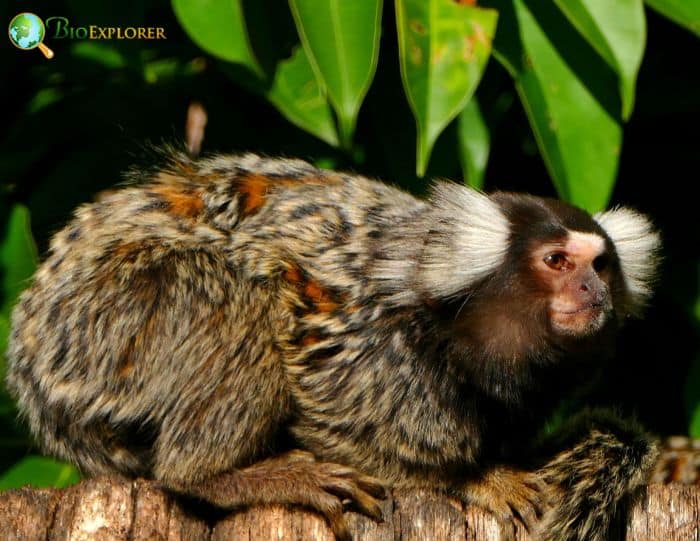
| Animalia | Primates | Callitrichidae | Callithrix | Callithrix jacchus |


- Common Name: Common Marmoset
- Taxonomy Classification Year: 1758
- Monkey Size: 12 to 15 cm (4.72 to 5.91 in)
- Skin Color(s): Grayish brown
- Habitat: Rainforest
- Diet: Omnivorous
- Native Countries: Brazil
Common Marmoset Distribution
Common Marmoset Characteristics

The common marmoset[1], also known as white-tufted-ear marmoset or white-tufted marmoset, is a type of New World monkey.
- This Brazilian monkey has a body length of around 12 to 15 cm and a tail length of 29.5 to 35 cm.
- Common marmoset identifying features include white ear tufts and a white blaze on the forehead.
- The fur on the head is usually dark brown, while the fur on the back is gray-brown with light transverse stripes.
- Also, they have very distinctive transverse stripes on their tails. The babies’ fur is yellow and brown, and the ear tuft develops later.
What Do Common marmosets Eat?

Based on human observations, Common marmosets consume these fruits and leaves:
- Jackfruit (Artocarpus heterophyllus)
- Ambay pumpwood (Cecropia pachystachya).
- Common guava (Psidium guajava).
- Erythrina mulungu (Erythrina verna).
Common Marmoset Facts

- As they have adapted to life at the forest edge of southeastern Brazil, common marmosets have also learned to take advantage of the region’s plantations.
- They are diurnal and typically live in troops of 2 to 13 individuals, mating polyandrous groups and their young.
- The most prominent behavioral trait of the common marmoset is non-maternal child care. The males and siblings rush to help the mother marmoset with the baby’s care; indeed, this help appears necessary for the baby’s survival.
- They live in stable extended families in which only a few members are allowed to reproduce.
- Marmosets, unlike other primate species, can leave their natal group when they become adults.
Suggested Reading: Different Breeds of Monkeys
Cite This Page
APA7MLA8Chicago
BioExplorer.net. (2025, December 21). Common Marmoset. Bio Explorer. https://www.bioexplorer.net/animals/mammals/monkeys/common-marmoset/.
BioExplorer.net. "Common Marmoset" Bio Explorer, 21 December 2025, https://www.bioexplorer.net/animals/mammals/monkeys/common-marmoset/.
BioExplorer.net. "Common Marmoset" Bio Explorer, December 21 2025. https://www.bioexplorer.net/animals/mammals/monkeys/common-marmoset/.











